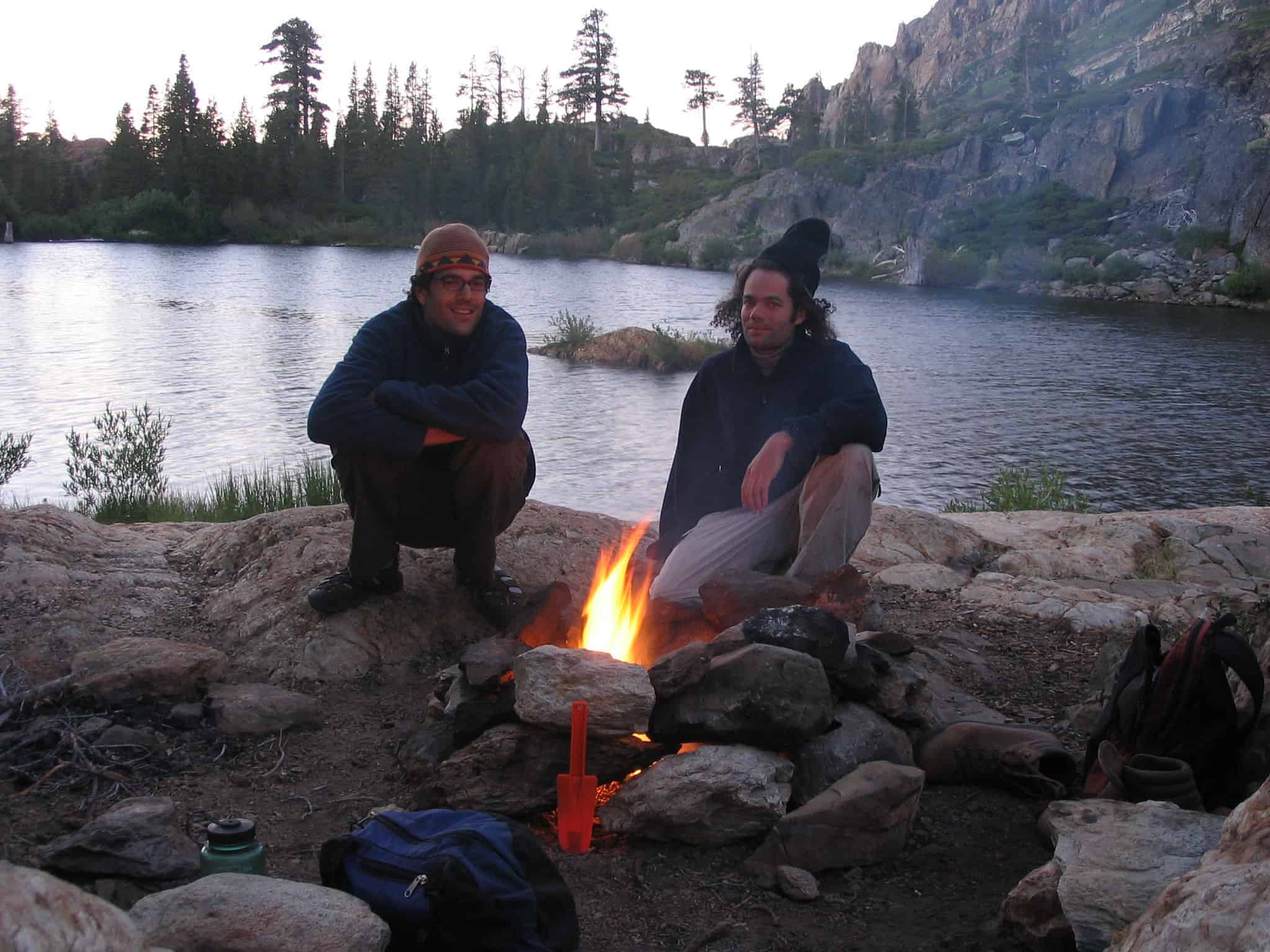Last updated on January 25th, 2023 at 12:18 pm
Campfires are one of the most magical aspects of camping. They not only create a great ambiance, but also provide warmth, light, and even a nourishing meal. The thing about campfires, however, is that they can go out overnight if left unattended! This can leave you chilly in your tent, or having to start another fire in the morning. Here, we’re providing tips on how to keep a camp fire going all night, so that you can stay toasty.
From building a self-feeding fire, to using the right type of wood, we have you covered.
1. Clear the Area for Safety
Firstly, if you’re wondering how to keep a camp fire going all night, you’ll likely be leaving it unattended during the night. If this is so, it’s extra important to consider safety. One of the first things you should do is clear the area where you will be having your fire.
During dry months, natural debris can catch fire very quickly, which is why you want to remove it.
For instance, remove any type of debris, leaves, sticks, branches, etc. that can catch a flame or spark. Drag them far away from the fire.
Also, try to dig your fire pit down into the ground slightly, if possible. This will help contain it naturally.
And finally, make sure to keep water nearby, just in case.
2. Use Dry Wood
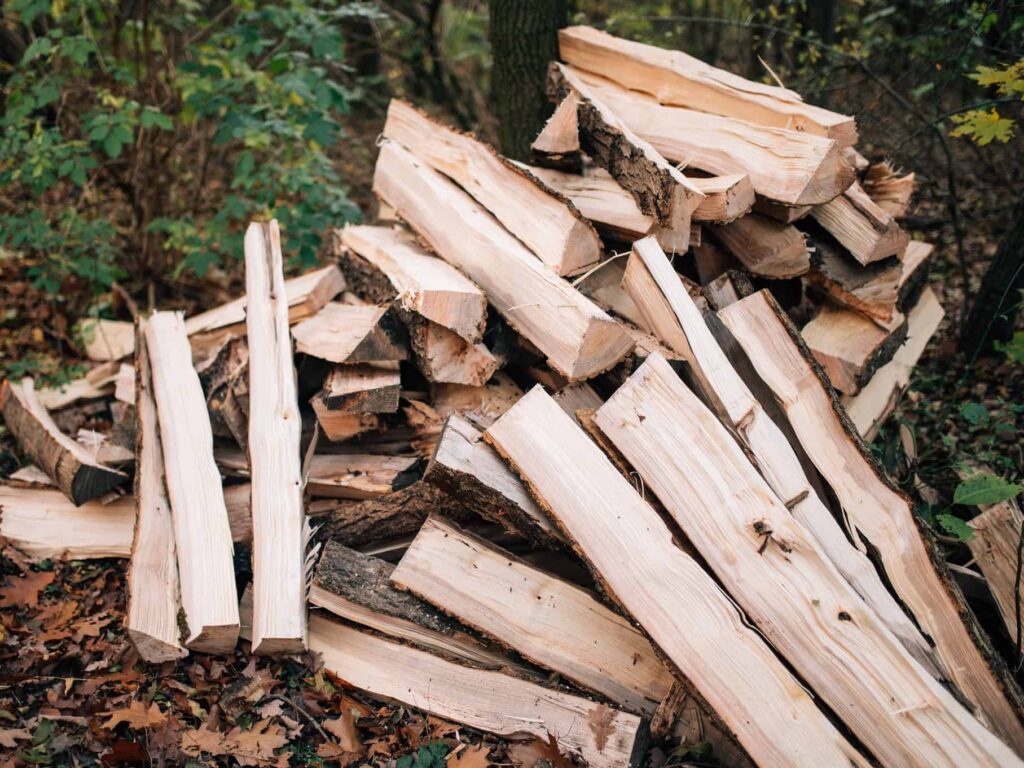
Additionally, choosing wood that has a low moisture content is key when you’re looking to keep a fire going.
Not only does dry wood burn longer, but it also provides steadier heat.
When you burn dry wood, the “focus” of the burn is to generate heat through fire.
When you burn wet wood, however, energy (heat) is wasted on heating the water inside the wood.
Be sure that all of your wood is dry so that your fire remains steady overnight.
3. Utilize a Windbreak
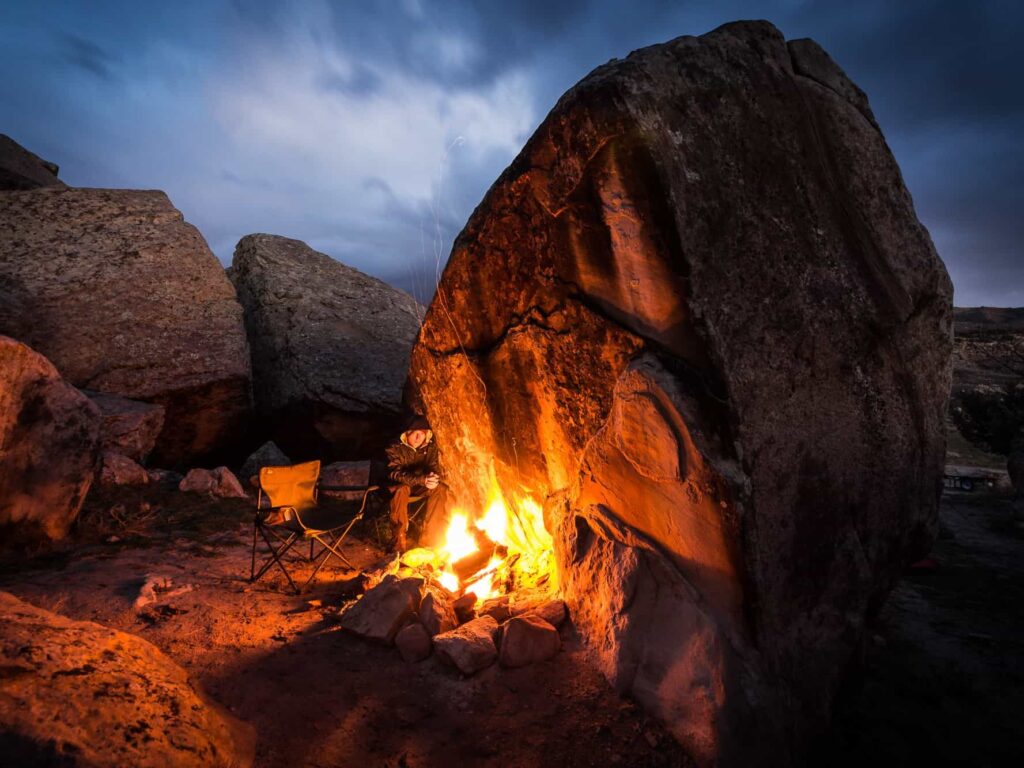
Another key to how to keep a camp fire going all night is to shelter it from the wind. Most of us have experienced how gusts of wind can weaken a fire, or even blow it out swiftly.
Because of this, try to build your fire into a dug out pit to give it some protection on its sides.
Also, if possible, build your fire near a rock wall, or even build a makeshift rock wall by your fire. This will act as a wind buffer.
4. Dry your Fire Pit
In addition, extra moisture in your fire pit can dampen your fire, causing it to go out prematurely.
This is why you need to make sure your fire pit is dry before you head to bed.
One way to do this is to start your fire a couple hours or so before you go to bed so that any moisture can dry up.
Then, after the area is dry, build your fire for the night.
However, if you’re camping in inclement weather, retaining heat in your tent may be the best way to stay warm. Check out our Best Dome Tent for Heavy Rain post for appropriate tents.
5. Use Larger Wood
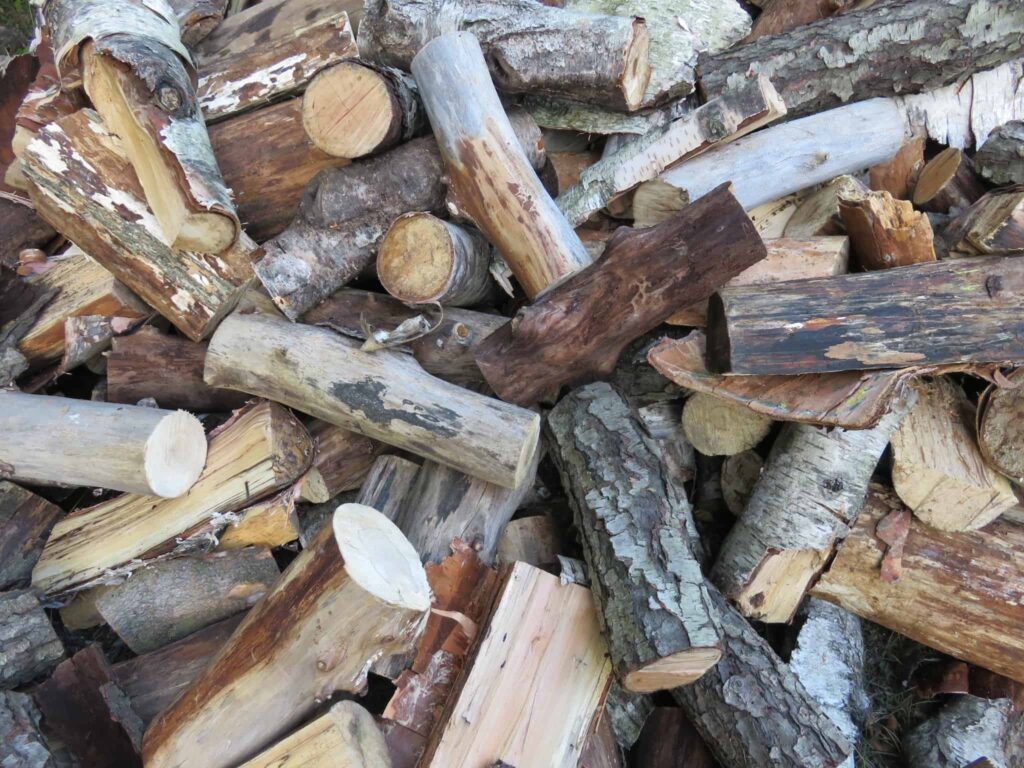
Furthermore, there is a general rule in camping that states smaller pieces of wood (under 6 inches) burn at ½ an inch per hour.
This is why it is always recommended to use larger wood that is over 6 inches in diameter.
Large wood will double the amount of time, giving you 1-inch per hour.
Of course, factors like wind and how hot your fire is can affect this burn time, but this is a general estimate.
You can use smaller pieces of wood and twigs for kindling.
And, if you’re camping in cold weather, we’ve found the best jackets in our Top 5 Best Fleece Jackets for Winter Camping post.
6. Erect a Pyramid Structure
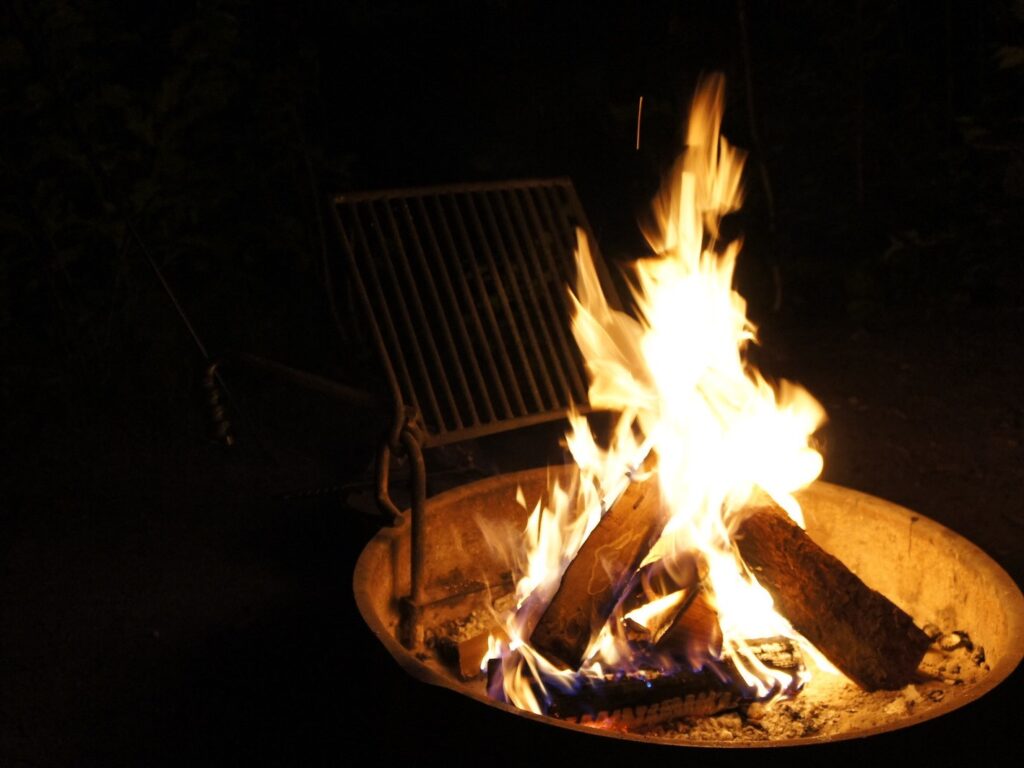
Making a teepee out of your logs isn’t just fun, but also creates the longest-lasting fire!
This is because more oxygen is allowed to circulate within the fire, which feeds the flames consistently.
Plus, your burning logs will fall in a way that keeps things burning longer.
How to build a pyramid fire:
- Add kindling to the bottom of your fire pit. This can be dry leaves, newspaper, pine needles, etc…
- Start placing your wood around the kindling, leaning the pieces against each other until a cone shape is formed.
- Light the kindling inside the teepee on one side, then on the other to encourage an even burn.
- Don’t worry if you need to add more kindling to get the flames going. Simply move some of your logs and keep trying until the wood catches.
Additionally, check out our Best Portable Fridge for Camping and Outdoors post if you’re a car camper looking for a perfectly enjoyable experience.
7. Use Slow Burning Woods
Additionally, when it comes to creating a campfire that lasts, choosing a slow-burning wood is crucial.
This will not only save your fire from going out, but also repeated trips to find more firewood.
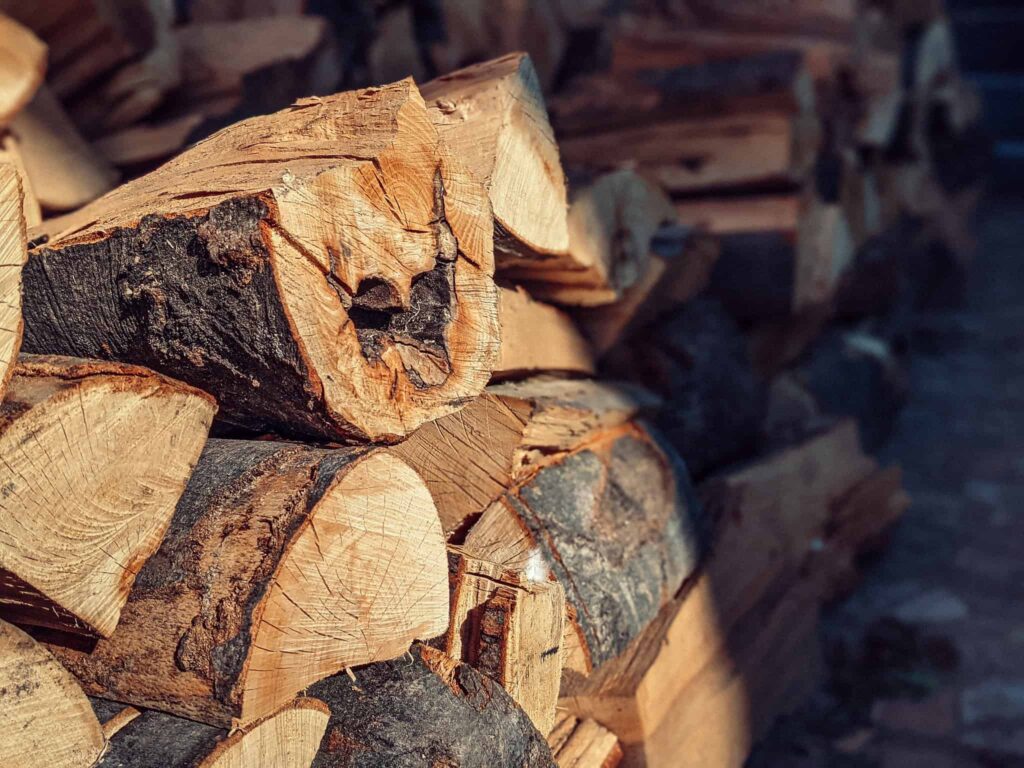
These are the best slow-burning woods to choose from:
- Birch
- Beech
- Cherry
- Cedar
- Ash
- Oak
- Maple
- Pine
As mentioned earlier, remember to grab logs larger than 6” in diameter so that they burn longer.
And, for searching for wood or building your fire after dusk, check out our 7 Headlamps Perfect for Hiking in the Dark post.
8. Create a Good Bed of Coals
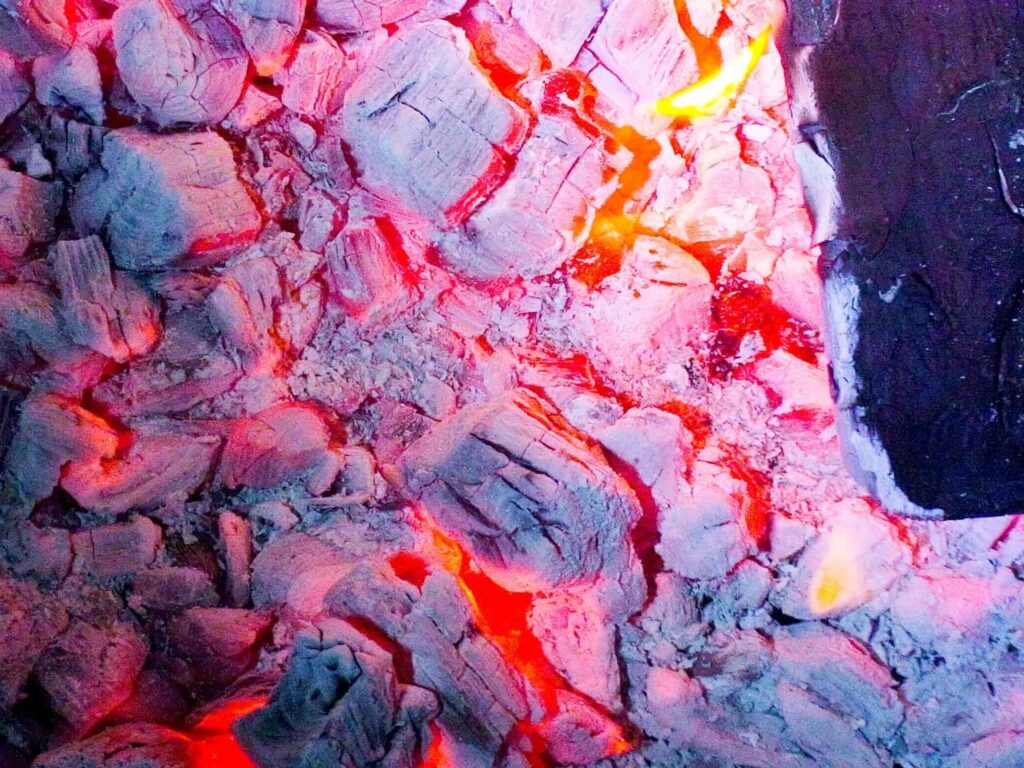
A bed of hot coals from a previous fire can be a blessing. How, you ask?
When you have a bed of coals and ash from a previous fire, they are already hot, which will help generate heat.
It will also help keep steady heat in your pit due to the fact that the coals are radiating warmth.
This is especially helpful if it’s cold or windy, since the coals can keep a site warm for your logs.
9. Add Large, Dry Rocks
It may very well be rocks to the rescue when it comes to keeping your campfire burning all night.
Before we see how to use rocks in your fire, it’s important to remember to be very careful with this method. Rocks can have air pockets and rivets that cause them to expand while heated, which could cause them to explode.
You’ll want to look for smooth, dry rocks. Also, choose medium-sized rocks instead of huge ones, so you can space them out in your campfire.
Adding these rocks to your fire pit can help hold heat within the fire throughout the night, encouraging it to stay burning.
10. Cover Your Wood with Ash
Another trick to ‘how to keep a camp fire going all night’ is to utilize ashes.
If you lightly place some ash on your logs while they’re laying over a hot bed of coals, it can help your fire burn longer.
This is because the ash acts as insulation. The flames will need to burn through this layer of ash to reach the log fully, which extends its burn time.
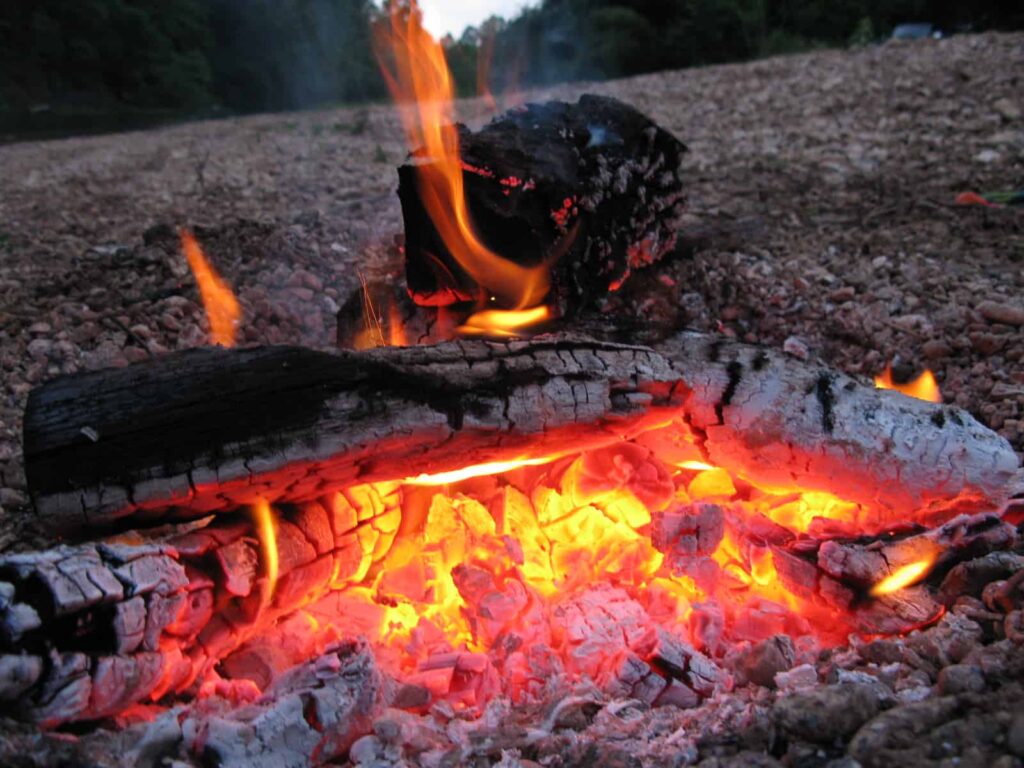
11. Ensure the Fire Can Breathe
Fire feeds on oxygen. This is why your fire needs to have proper ventilation in order to avoid ash suffocating it.
Building a rock ring around your fire with spaces for airflow will insulate your fire, while also providing necessary ventilation.
You can also dig trenches in the sides of your dug-out fire pit to encourage more air flow.
12. Build a Self-Feeding Fire
Self-feeding fires are as they sound: they feed themselves. This is particularly important, since you won’t be tending to your fire all night.
The self-feeding fire system requires a bit of work, so it might be best for a multi-night camp.
- First, you want to collect four strong pieces of wood. These should be green wood and three feet in length, two inches in diameter. These will be your log “ramps.”
- Now, stake your pieces of wood into the ground. This will look like two sticks across from each other, angled at 45 degrees to create a “V” shape.
- Now you’ll want to load your raps with round logs that roll easily.
- Then, you’ll place your standard fire started logs, plus kindling, on top of the bottom two logs in the ramp base.
- Start a small fire with these fuel logs.
From this point, you’ll want to ensure the bottom logs in your ramp catch. You’ll also want to make sure the flames don’t travel up and onto your other logs.
If your setup is successful, the bottom logs will burn, and which they turn to ash, new logs will roll into place. In this way, the fire “feeds” itself.
Become a Fire Master
For campers and backpackers desperate to keep their campfire going through the night, whether for warmth, ease, or for breakfast in the morning, fire skills are a must.
For instance, it can become a necessity to know how to keep a camp fire going all night, especially in the cold. Especially because they can be so difficult to get started in the first place.
In fact, when it comes to creating a campfire that lasts, choosing a slow-burning wood is crucial. This will not only save your fire from going out, but also repeated trips to find more firewood. With the above tips, patience, and a good attitude, you’re well on your way to having the best burning, most sustainable fire ever.
Keeping the magic of a campfire going all night long doesn’t have to be difficult. When you utilize the right fire structure, logs, and ventilation, it’s more than possible to keep your campfire burning. These tips will allow you to stay warm throughout the night, plus have your fire hot for breakfast!
So, get out there and impress your friends and family.
About the Author
Sarah Sampsell
Title Image Credit, How to Keep a Camp Fire Going All Night: Ishmael Riles | (source) | Attribution-ShareAlike 2.0 Generic (CC BY-SA 2.0)— reduced file size and image
Image Credit 1, How to Keep a Camp Fire Going All Night: Ivan Radic | (source) | Attribution 2.0 Generic (CC BY 2.0)— reduced file size and image
Image Credit 2, How to Keep a Camp Fire Going All Night: Pierce Martin | (source) | Attribution 2.0 Generic (CC BY 2.0)— reduced file size and image
How to Keep a Camp Fire Going All Night, Image Credit 3: Kaarina Dillabough | (source) | Attribution-ShareAlike 2.0 Generic (CC BY-SA 2.0)— reduced file size and image
How to Keep a Camp Fire Going All Night, Image Credit 4: James Saunders | (source) | Attribution-ShareAlike 2.0 Generic (CC BY-SA 2.0)— reduced file size and image
Image Credit 5, How to Keep a Camp Fire Going All Night: Ivan Radic | (source) | Attribution 2.0 Generic (CC BY 2.0)— reduced file size and image
Image Credit 6, How to Keep a Camp Fire Going All Night: Jason Hickey | (source) | Attribution 2.0 Generic (CC BY 2.0)— reduced file size and image
How to Keep a Camp Fire Going All Night, Image Credit 4: OakleyOriginals | (source) | Attribution 2.0 Generic (CC BY 2.0)— reduced file size and image

